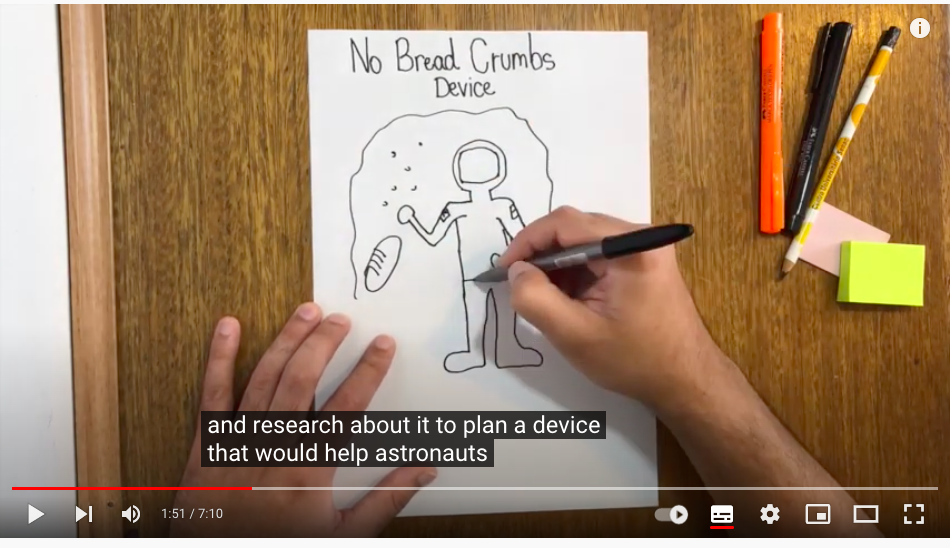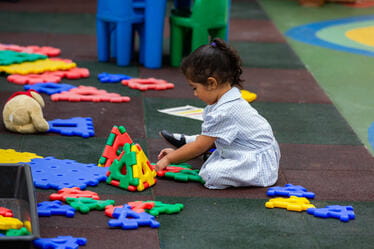Learning Creative Thinking with STEAM
Creative Thinking can be considered one of the most valuable and necessary skills in today's society. We all know how workplaces are constantly changing due to new technologies and ways of seeing things. With that in mind, Cathy Davidson estimated in her book Now You See It, that two-thirds of today's children will end up doing work that hasn't been invented yet. So, how can we teach and prepare our children for a future that we can't actually predict?
Creative Thinking can be considered one of the most valuable and necessary skills in today's society. We all know how workplaces are constantly changing due to new technologies and ways of seeing things. With that in mind, Cathy Davidson estimated in her book Now You See It, that two-thirds of today's children will end up doing work that hasn't been invented yet. So, how can we teach and prepare our children for a future that we can't actually predict?
Here is where the ability to think, and act creatively becomes more important than ever before. Thinking creatively is a way to process information that allows us to adapt and be prepared for the unpredictable. It allows us to question and look at things from different angles. It allows us to link previous knowledge and be open to possibilities that may lead to new ideas that were once inconceivable.
Therefore Creativity is a crucial skill that will define the next generation of problem-solvers, considering that how and what we create (including solutions for our problems), has much to do with the resources available, and what we make of them.
The way I see it, this is the whole point of teaching STEAM (Science, Technology, Engineering, Art, and Mathematics). STEAM is meant to inspire inquiry and curiosity, empower students to ask thought-provoking questions, promote creativity and exploration, and connect their problem-solving to real-world situations. It is not a subject itself, but an approach to hands-on education focused on developing important 21st-century skills.

Here is a short video from one of our STEAM Challenges in a partnership with MIT. It perfectly shows how creative thinking is a long-term process that grows out of a certain type of hard work, planned exploration, playful experimentation, and a systematic investigation.
It might seem overwhelming at a first sight, but there are many ways to incorporate these experiences into your child’s everyday learning. Here are some examples:
Reading Stories:
Nearly every child's book has some sort of implied STEAM experience that you can try with children. The Three Little Pigs is a perfect example of that. After a great guided reading session, offering a range of different materials such as blocks, lollipop sticks, straws, play dough, pots, strings and etc. might naturally spark the children's desire to build one of the pigs’ houses.
In this process, children will not only recap the main events of the narrative, but also explore the properties of each material, and create something using their own engineering ideas. While playing and retelling their own version of the story, there is a good chance that some of the houses will collapse. This is another part of the scientific method. We actually want them to collapse, so children go back to figure out what was wrong and how to solve the problem and create a better version of their houses.
By doing this, children are not only learning STEAM, but also learning how to look at objects from a different perspective, use them in a different way, and think creatively to achieve a goal.
Cooking:
Recently, we asked our students to bake bread and send in photos of the process. It is easy to relate it to Science or Chemistry lessons, but it is important to be sure that children are actually thinking about what is happening and why in each step of the process.
One way to step up the challenge would be by changing some items and proportions in additional samples and taking notes of what happens in comparison to the original one. By observing and comparing, children are learning about fair-testing, and cause / consequence.
Once the loaves of bread are baked, children can give a sample of each "experiment" to a member of their family, and ask them for feedback. By doing this, children are able to learn more about instructional texts, interviews, measurements, chemical and physical reactions, living things and respiration (yeast), and carrying on a real investigation.
There are infinite possibilities. The key is not to give children a clear set of instructions on what to do, but to identify childrens' individual interests and explore them through a different lens, so they can develop their own ideas about them.
Here are some other great inspirations that might help you explore objects and small projects through different lenses, to support and enhance your child's progress in becoming a creative thinker:







